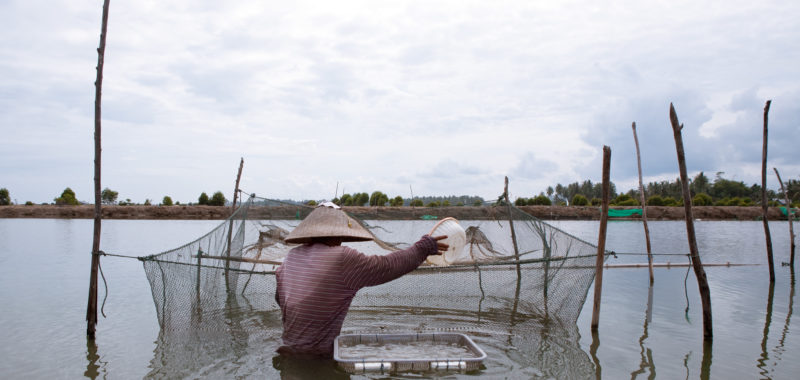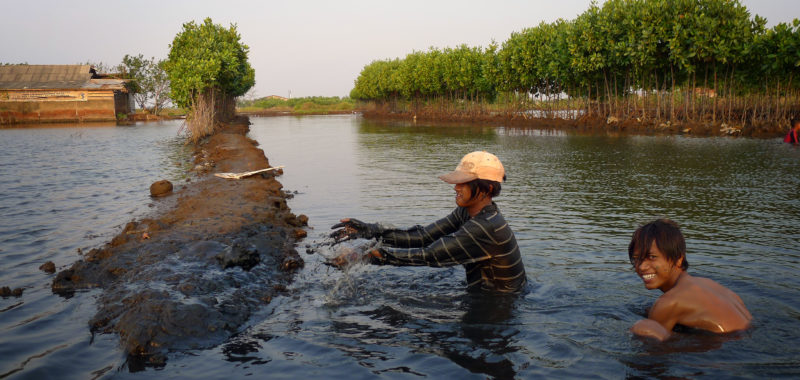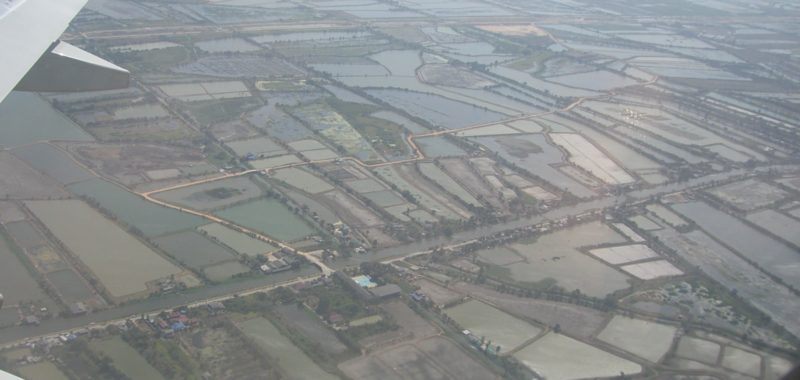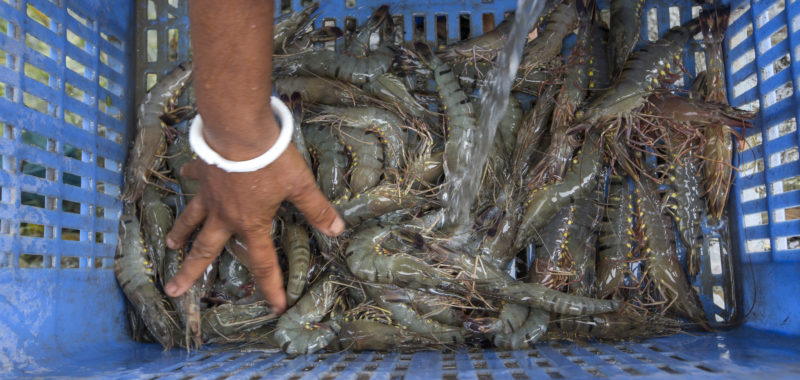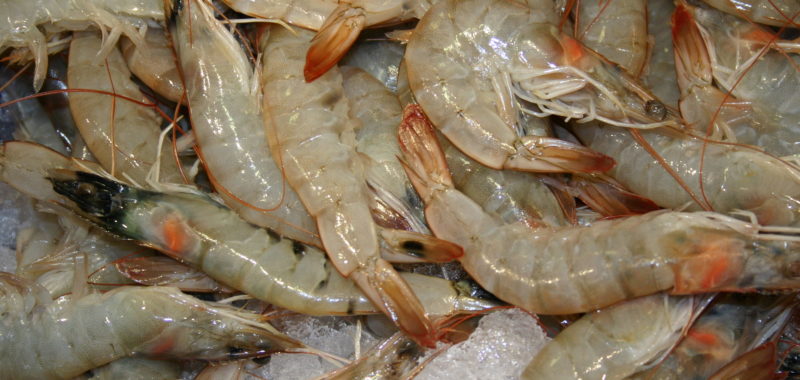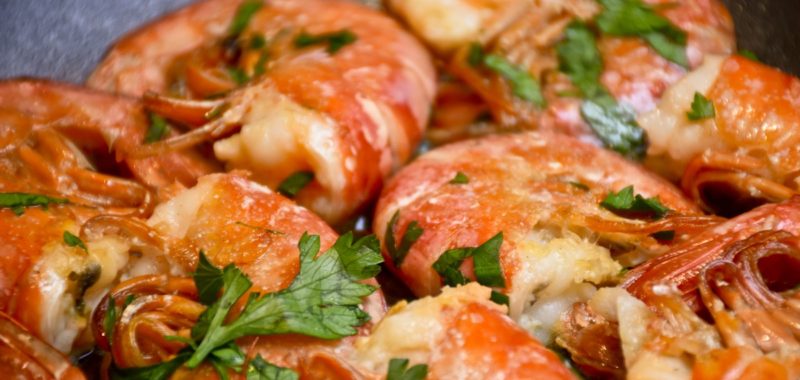Priority Species: Farmed tropical shrimp
Scientific name: Litopenaeus vannamei; Penaeus monodon
Nearly all shrimp farming occurs in tropical or semi-tropical coastal regions where mangrove forests play a number of vital ecosystem and socio-economic functions. Mangroves forests are important habitat and nursery grounds for a number of species, provide water purification, coastal stabilization and protection functions, as well as function as a carbon storage. In turn, mangroves help support coastal fisheries and can act as a protective barrier for coastal communities during climatic events (e.g. storms, tidal waves/tsunamis).
Globally, shrimp aquaculture is a leading cause of mangrove deforestation due to the industry’s rapid growth and expansion in the last four decades. Mangrove loss and degradation is particularly prominent in Asia, where 89 percent of global aquaculture occurs.
The majority of shrimp farms are intensive or semi-intensive – a system of many small ponds stocked with high-densities of shrimp. The industry use of chemicals includes fertilizers, pesticides and disinfectants, as well as antibiotics. Pollution (waste and chemical effluent) is typically released directly into surrounding coastal areas and groundwater. High-density farming can also lead to disease outbreaks and due to global transfers of stock, spread pathogens to new regions. Consequently, the shrimp farming industry has gained a ‘boom and bust’ reputation.
Some countries still rely on wild seed for broodstock. The associated fisheries are associated with some of the highest discard rates. Shrimp farming also relies on wild fish for feed. For example, whiteleg shrimp farmed in China uses approximately 2.13 tonnes of wild fish for every 1 tonne of farmed shrimp produced.
Imported farmed shrimp has also been linked to social sustainability issues, including slavery and other human rights abuses.
Where feasible, closed farming systems should be utilized, as such systems are able to control effluent, stopping pollution and the spread of pathogens. Less-intensive farming practices (i.e. extensive or traditional low density farming) are also less-destructive. Farms should be sited away from sensitive coastal areas and areas of high conservation value.
The industry also needs to improve feed using alternative protein sources and decreasing reliance on wild fisheries.
Management/Monitoring: Governments should establish, monitor and enforce robust and rigorous aquaculture regulations which includes area- or ecosystem-based principles, particularly to address carrying capacity and disease management, and better regulate chemical use within the industry.
Markets: SeaChoice will continue our labelling efforts so that Canadian buyers can differentiate between Canadian shrimp and that which is imported. Our eco-certification work will help strengthen the standards behind shrimp eco-labels. We encourage consumers to support more sustainable options such as closed-system farmed shrimp or wild trap-caught shrimp.
Common/Market Name
Whiteleg shrimp, tiger prawn
Distribution
Farmed in Asian countries such as Bangladesh, China, India, Indonesia, Myanmar, Thailand and Vietnam; Latin America countries such as Ecuador, Honduras and Mexico
Harvest Method
Aquaculture methods: Ponds – intensive, semi-intensive, extensive; Closed-system
Management Agency
Various, depending on the country
